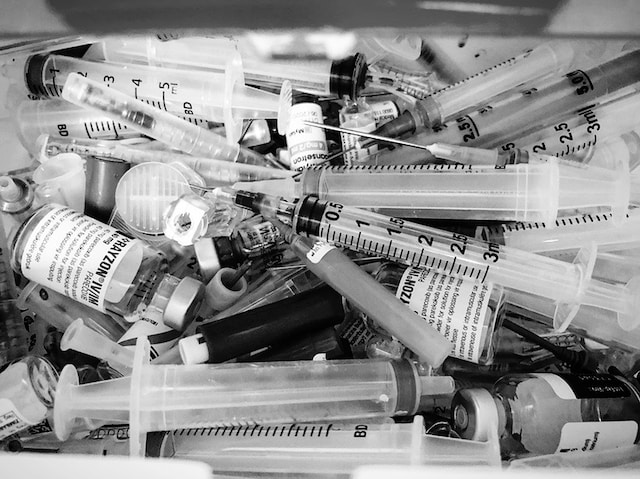What Are Stimulant Drugs?
Large doses of stimulants can cause overstimulation leading to adverse effects such as:
- Anxiety
- Panic
- Seizures
- Headaches
- Stomach cramps
- Aggression
- Paranoia


Common Stimulants Include:
Amphetamines (Adderall, Dexedrine)
Methylphenidate (Concerta and Ritalin)
Diet aids (Didrex, Bontril, Preludin, Fastin, Adipex Pionomin, and Meridia)
Illicitly produced drugs such as:
- Methamphetamine
- Cocaine
- Methcathinone
- Ecstasy/MDMA
Common Street Names Include:
Bennies
Black Beauties
Cat
Coke
Crank
Crystal
Flake
Ice
Pellets
R-Ball
Skippy
Snow
Speed
Uppers
Vitamin R


How Are Stimulants Abused?
Stimulants can be in pill or capsule form and are typically swallowed.
Smoking, snorting, or injecting stimulants can produce a sudden sensation known as a “rush” or “flash.”
Stimulant abuse is often associated with binge use (consuming large doses of stimulants over a short period of time).
Heavy users may inject themselves every few hours, continuing until they have used all their drug supply or reached a point of delirium, psychosis, and/or physical exhaustion.
During heavy abuse, all other interests become secondary to recreating the initial euphoric rush or flash.
Effects of Stimulant Abuse
Stimulants work to increase the amount of neurotransmitters in the brain, including dopamine, which can lead to intense feelings of alertness.
Abusing stimulants can increase the user’s blood pressure, heart rate, and breathing.
Heavy use can cause irregular heartbeat, heart failure, seizures, and possibly death.
Learn more here


If large doses of stimulants are taken, these effects can greatly increase. Taking too large of a dose at one time or taking large doses over an extended period can cause adverse effects including:
• Dizziness
• Tremors
• Headaches
• Flushed skin
• Chest pain/palpitations
• Excessive sweating
• Vomiting
• Abdominal cramps
Stimulant Overdose
In an overdose without medical intervention, high fever, convulsions, and cardiovascular collapse may occur, followed by death.
Because of the effects of stimulants on the body’s cardiovascular and body heat-regulating systems, physical exertion can increase the dangers of stimulant use
Learn more here

There is no antidote to reverse a stimulant overdose. Naloxone will not work for a stimulant overdose, but it will not cause harm. If in doubt, use Naloxone.

The following symptoms are signs of stimulant overdose. 911 should be called immediately if a person shows:
• Jerking or rigid limbs
• Loss of consciousness/in and out of consciousness
• Rapidly increasing temperature
• Rapidly increasing pulse
• Seizures
• Chest pains
• Severe headaches
• Sweating/agitation
What To Do If Someone Experiences a Stimulant Overdose
1) Call 911 immediately
- If the overdose involves different substances, Naloxone can reverse the effects of any opioid. If in doubt, use Naloxone. Naloxone will not cause harm even if an opioid is not present.
- If the heart has stopped, begin chest compressions
2) While waiting for the ambulance to arrive:
- Stay with the individual for support and encourage hydration
- Do not give them anything by mouth if they are unconscious
- If they are having a seizure make sure there is nothing around that can hurt them. Do not put anything in their mouth or hold them.
3) If the individual is conscious, they may experience “over-amping” (i.e crashing, anxiety, paranoia) or sleep deprivation from stimulant use. If so, do the following:
- Stay calm, remain with them, and move away from activity and noise
- Be careful not to over-hydrate, but give water or another non-sugary, non-caffeinated drink to help replace lost electrolytes
- Place cool wet cloths on the forehead, back of neck, and armpits

For treatment options for stimulant abuse, check out the Substance Use section on this website.
For more information on recovery, check out the Recovery Tools section on this website.